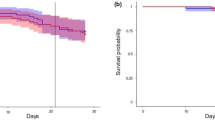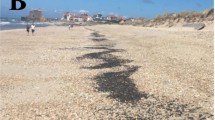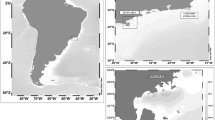Abstract
Marine species exhibit a multitude of biological rhythms, in accordance with their complex ecosystem governed by sun, earth and moon trajectories. Because of the inclination of the earth’s axis, the high Arctic ecosystem is characterized by several months of permanent illumination during the polar day. The persistence of biological rhythms in this photic context remains unclear. Yet, this information is crucial for the understanding of polar ecosystems functioning, as well as to predict the impact of future climate changes. Particularly, the impact of extreme photoperiods on recent invasive species remains largely unknown. Here, we investigate how environmental cycles shape the behavior of a re-emerging polar resident, the mussel Mytilus sp. during polar day (17 April to 26 August 2020; Svalbard, Ny-Ålesund, 78°56ʹ N, 11°56ʹ E). Our results show that in the high Arctic polar day, mussels’ behavior is shaped by both the photoperiod and the diel sun trajectories above the horizon. In addition, mussels also exhibit tidal, semi-lunar, and lunar rhythms of valve opening amplitude. We argue that these rhythms may have ecosystems functioning implications, and that the mussels’ ability to deal with drastic light regimes may explain their northward expansion and new resettlement in high Arctic.




Similar content being viewed by others
Data availability
All data generated or analyzed during this study are included in this published article and its supplementary information files.
References
Abhilash L, Shindey R, Sharma VK (2017) To be or not to be rhythmic? A review of studies on organisms inhabiting constant environments. Biol Rhythm Res 48:677–691. https://doi.org/10.1080/09291016.2017.1345426
Ameyaw-Akumfi C, Naylor E (1987) Temporal patterns of shell-gape in Mytilus edulis. Mar Biol 95:237–242. https://doi.org/10.1007/BF00409011
Andrade H, Massabuau J-C, Cochrane S, Ciret P, Tran D, Sow M, Camus L (2016) High frequency non-invasive (HFNI) bio-sensors as a potential tool for marine monitoring and assessments. Front Mar Sci. https://doi.org/10.3389/fmars.2016.00187
Andreatta G, Tessmar-Raible K (2020) The still dark side of the moon: molecular mechanisms of lunar-controlled rhythms and clocks. J Mol Biol 432:3525–3546. https://doi.org/10.1016/j.jmb.2020.03.009
Arnold W, Ruf T, Loe LE, Irvine RJ, Ropstad E, Veiberg V, Albon SD (2018) Circadian rhythmicity persists through the polar night and midnight sun in Svalbard reindeer. Sci Rep 8:14466. https://doi.org/10.1038/s41598-018-32778-4
Ballesta-Artero I, Witbaard R, Carroll ML, van der Meer J (2017) Environmental factors regulating gaping activity of the bivalve Arctica islandica in Northern Norway. Mar Biol 164:116. https://doi.org/10.1007/s00227-017-3144-7
Beaugrand G, Conversi A, Atkinson A, Cloern J, Chiba S, Fonda-Umani S, Kirby RR, Greene CH, Goberville E, Otto SA, Reid PC, Stemmann L, Edwards M (2019) Prediction of unprecedented biological shifts in the global ocean. Nat Clim Change 9:237–243. https://doi.org/10.1038/s41558-019-0420-1
Berge J, Johnsen G, Nilsen F, Gulliksen B, Slagstad D (2005) Ocean temperature oscillations enable reappearance of blue mussels Mytilus edulis in Svalbard after a 1000 year absence. Mar Ecol Prog Ser 303:167–175. https://doi.org/10.3354/meps303167
Bernard I, Massabuau J-C, Ciret P, Sow M, Sottolichio A, Pouvreau S, Tran D (2016) In situ spawning in a marine broadcast spawner, the Pacific oyster Crassostrea gigas: timing and environmental triggers. Limnol Oceanogr 61:635–647. https://doi.org/10.1002/lno.10240
Bertolini E, Schubert FK, Zanini D, Sehadová H, Helfrich-Förster C, Menegazzi P (2019) Life at high latitudes does not require circadian behavioral rhythmicity under constant darkness. Curr Biol. https://doi.org/10.1016/j.cub.2019.09.032
Bingham C, Arbogast B, Guillaume GC, Lee JK, Halberg F (1982) Inferential statistical methods for estimating and comparing cosinor parameters. Chronobiologia 9:397–439
Bloch G, Barnes BM, Gerkema MP, Helm B (2013) Animal activity around the clock with no overt circadian rhythms: patterns, mechanisms and adaptive value. Proc Biol Sci 280:20130019. https://doi.org/10.1098/rspb.2013.0019
Box GEP, Jenkins GM, Reinsel GC, Ljung GM (2015) Time series analysis: forecasting and control. John Wiley & Sons, Hoboken
Chapman EC, O’Dell AR, Meligi NM, Parsons DR, Rotchell JM (2017) Seasonal expression patterns of clock-associated genes in the blue mussel Mytilus edulis. Chronobiol Int 34:1300–1314. https://doi.org/10.1080/07420528.2017.1363224
Chapman EC, Bonsor BJ, Parsons DR, Rotchell JM (2020) Influence of light and temperature cycles on the expression of circadian clock genes in the mussel Mytilus edulis. Mar Environ Res 159:104960. https://doi.org/10.1016/j.marenvres.2020.104960
Chylek P, Folland C, Klett JD, Wang M, Hengartner N, Lesins G, Dubey MK (2022) Annual mean arctic amplification 1970–2020: observed and simulated by CMIP6 climate models. Geophys Res Lett 49:e2022GL099371. https://doi.org/10.1029/2022GL099371
Comeau LA, Babarro JMF, Longa A, Padin XA (2018) Valve-gaping behavior of raft-cultivated mussels in the Ría de Arousa, Spain. Aquac Rep 9:68–73. https://doi.org/10.1016/j.aqrep.2017.12.005
Dale T, Kaartvedt S (2000) Diel patterns in stage-specific vertical migration of Calanus finmarchicus in habitats with midnight sun. ICES J Mar Sci 57:1800–1818. https://doi.org/10.1006/jmsc.2000.0961
Enright JT (1976) Plasticity in an isopod’s clockworks: shaking shapes form and affects phase and frequency. J Comp Physiol 107:13–37. https://doi.org/10.1007/BF00663916
Fortier M, Fortier L, Hattori H, Saito H, Legendre L (2001) Visual predators and the diel vertical migration of copepods under Arctic sea ice during the midnight sun. J Plankton Res 23:1263–1278. https://doi.org/10.1093/plankt/23.11.1263
García-March JR, Sanchís Solsona MÁ, García-Carrascosa AM (2008) Shell gaping behaviour of Pinna nobilis L., 1758: circadian and circalunar rhythms revealed by in situ monitoring. Mar Biol 153:689–698. https://doi.org/10.1007/s00227-007-0842-6
Gouthiere L, Mauvieux B, Davenne D, Waterhouse J (2005) Complementary methodology in the analysis of rhythmic data, using examples from a complex situation, the rhythmicity of temperature in night shift workers. Biol Rhythm Res 36:177–193. https://doi.org/10.1080/09291010400026298
Häfker NS, Tessmar-Raible K (2020) Rhythms of behavior: are the times changin’? Curr Opin Neurobiol 60:55–66. https://doi.org/10.1016/j.conb.2019.10.005
Helm B, Visser ME, Schwartz W, Kronfeld-Schor N, Gerkema M, Piersma T, Bloch G (2017) Two sides of a coin: ecological and chronobiological perspectives of timing in the wild. Philos Trans R Soc B Biol Sci 372:20160246. https://doi.org/10.1098/rstb.2016.0246
Huffeldt NP (2020) Photic barriers to poleward range-shifts. Trends Ecol Evol. https://doi.org/10.1016/j.tree.2020.04.011
Hüppe L, Payton L, Last K, Wilcockson D, Ershova E, Meyer B (2020) Evidence for oscillating circadian clock genes in the copepod Calanus finmarchicus during the summer solstice in the high Arctic. Biol Lett 16:20200257. https://doi.org/10.1098/rsbl.2020.0257
Kaiser TS, Neumann J (2021) Circalunar clocks—old experiments for a new era. BioEssays. https://doi.org/10.1002/bies.202100074
Krüll F (1976) Zeitgebers for animals in the continuous daylight of high arctic summer. Oecologia 24:149–157. https://doi.org/10.1007/BF00572756
Last KS, Hobbs L, Berge J, Brierley AS, Cottier F (2016) Moonlight drives Ocean-scale mass vertical migration of zooplankton during the Arctic winter. Curr Biol 26:244–251. https://doi.org/10.1016/j.cub.2015.11.038
Leopold P, Renaud PE, Ambrose WG, Berge J (2019) High Arctic Mytilus spp.: occurrence, distribution and history of dispersal. Polar Biol 42:237–244. https://doi.org/10.1007/s00300-018-2415-1
Mat AM, Massabuau J-C, Ciret P, Tran D (2012) Evidence for a plastic dual circadian rhythm in the oyster Crassostrea gigas. Chronobiol Int 29:857–867. https://doi.org/10.3109/07420528.2012.699126
Mathiesen SS, Thyrring J, Hemmer-Hansen J, Berge J, Sukhotin A, Leopold P, Bekaert M, Sejr MK, Nielsen EE (2017) Genetic diversity and connectivity within Mytilus spp. in the subarctic and Arctic. Evol Appl 10:39–55. https://doi.org/10.1111/eva.12415
Mermet J, Yeung J, Naef F (2017) Systems chronobiology: global analysis of gene regulation in a 24-hour periodic world. Cold Spring Harb Perspect Biol 9:a028720. https://doi.org/10.1101/cshperspect.a028720
Nelson W, Tong YL, Lee JK, Halberg F (1979) Methods for cosinor-rhythmometry. Chronobiologia 6(4):305–323
Nordtug T, Mela TB (1988) Diurnal variations in natural light conditions at summer time in arctic and subarctic areas in relation to light detection in insects. Ecography 11:202–209. https://doi.org/10.1111/j.1600-0587.1988.tb00802.x
Oliveri P, Fortunato AE, Petrone L, Ishikawa-Fujiwara T, Kobayashi Y, Todo T, Antonova O, Arboleda E, Zantke J, Tessmar-Raible K, Falciatore A (2014) The cryptochrome/photolyase family in aquatic organisms. Mar Genomics 14:23–37. https://doi.org/10.1016/j.margen.2014.02.001
Payton L, Tran D (2019) Moonlight cycles synchronize oyster behaviour. Biol Lett 15:20180299. https://doi.org/10.1098/rsbl.2018.0299
Payton L, Sow M, Massabuau J-C, Ciret P, Tran D (2017a) How annual course of photoperiod shapes seasonal behavior of diploid and triploid oysters Crassostrea gigas. PLoS ONE 12:e0185918. https://doi.org/10.1371/journal.pone.0185918
Payton L, Perrigault M, Hoede C, Massabuau J-C, Sow M, Huvet A, Boullot F, Fabioux C, Hegaret H, Tran D (2017b) Remodeling of the cycling transcriptome of the oyster Crassostrea gigas by the harmful algae Alexandrium minutum. Sci Rep 7:3480. https://doi.org/10.1038/s41598-017-03797-4
Payton L, Hüppe L, Noirot C, Hoede C, Last KS, Wilcockson D, Ershova E, Valière S, Meyer B (2021) Widely rhythmic transcriptome in Calanus finmarchicus during the high Arctic summer solstice period. iScience. https://doi.org/10.1016/j.isci.2020.101927
Perrigault M, Andrade H, Bellec L, Ballantine C, Camus L, Tran D (2020) Rhythms during the polar night: evidence of clock-gene oscillations in the Arctic scallop Chlamys islandica. Proc R Soc B Biol Sci 287:20201001. https://doi.org/10.1098/rspb.2020.1001
Post E, Steinman BA, Mann ME (2018) Acceleration of phenological advance and warming with latitude over the past century. Sci Rep 8:3927. https://doi.org/10.1038/s41598-018-22258-0
R Core Team (2021) R: a language and environment for statistical computing. R Foundation for Statistical Computing, Vienna, Austria. https://www.R-project.org/. Accessed 8 Aug 2023
Scargle JD (1982) Studies in astronomical time series analysis. II-Statistical aspects of spectral analysis of unevenly spaced data. Astrophys J 263:835–853
Schmal C, Herzel H, Myung J (2020) Clocks in the wild: entrainment to natural light. Front Physiol. https://doi.org/10.3389/fphys.2020.00272
Stelzer RJ, Chittka L (2010) Bumblebee foraging rhythms under the midnight sun measured with radiofrequency identification. BMC Biol 8:93. https://doi.org/10.1186/1741-7007-8-93
Tessmar-Raible K, Raible F, Arboleda E (2011) Another place, another timer: marine species and the rhythms of life. BioEssays 33:165–172. https://doi.org/10.1002/bies.201000096
Tran D, Ciret P, Ciutat A, Durrieu G, Massabuau J-C (2003) Estimation of potential and limits of bivalve closure response to detect contaminants: application to cadmium. Environ Toxicol Chem 22:914–920. https://doi.org/10.1002/etc.5620220432
Tran D, Nadau A, Durrieu G, Ciret P, Parisot J-P, Massabuau J-C (2011) Field chronobiology of a molluscan bivalve: how the Moon and Sun cycles interact to drive oyster activity rhythms. Chronobiol Int 28:307–317. https://doi.org/10.3109/07420528.2011.565897
Tran D, Sow M, Camus L, Ciret P, Berge J, Massabuau J-C (2016) In the darkness of the polar night, scallops keep on a steady rhythm. Sci Rep 6:1–9. https://doi.org/10.1038/srep32435
Tran D, Perrigault M, Ciret P, Payton L (2020a) Bivalve mollusc circadian clock genes can run at tidal frequency. Proc R Soc B Biol Sci 287:20192440. https://doi.org/10.1098/rspb.2019.2440
Tran D, Andrade H, Durier G, Ciret P, Leopold P, Sow M, Ballantine C, Camus L, Berge J, Perrigault M (2020b) Growth and behaviour of blue mussels, a re-emerging polar resident, follow a strong annual rhythm shaped by the extreme high arctic light regime. R Soc Open Sci 7:200889. https://doi.org/10.1098/rsos.200889
Tran D, Andrade H, Camus L, Leopold P, Ballantine C, Berge J, Durier G, Sow M, Ciret P (2023) Evidence of separate influence of moon and sun on light synchronization of mussel’s daily rhythm during the polar night. iScience. https://doi.org/10.1016/j.isci.2023.106168
Vihtakari M (2023) ggOceanMaps: Plot Data on Oceanographic Maps using ‘ggplot2’. R package version 2.0.4. https://mikkovihtakari.github.io/ggOceanMaps/. Accessed 8 Aug 2023
Williams CT, Barnes BM, Buck CL (2015) Persistence, entrainment, and function of circadian rhythms in polar vertebrates. Physiology 30:86–96. https://doi.org/10.1152/physiol.00045.2014
World Meteorological Organizations (2021) Arctic assessment report shows faster rate of warming. https://public.wmo.int/en/media/news/arctic-assessment-report-shows-faster-rate-of-warming. Accessed 14 Jul 2022
Acknowledgements
We thank C. Portier, M. Sow, J. Berge, P.E. Renaud, G. Tran and S. Duveau for technical assistance and discussion. Authors also thank the AWI center for scientific diving for their help to biosensors deployment. We thank the reviewers.
Funding
This work was supported by the French National Research Agency (ANR), WAQMOS project 15-CE04-0002 (2015–2020), the French Polar Institute, IPEV (ARCTICLOCK project 1166), the Svalbard Environmental Protection Fund (project 15/133) and the High North Research Centre for Climate and the Environment (Fram Centre) throughout the flagship “Effects of climate change on sea and coastal ecology in the north”.
Author information
Authors and Affiliations
Contributions
Study design and methodology: DT, LP, PC, HA, CB, LC; biosensor manufacture: PC, DT; fieldwork: DT, PC, HA, CB; data treatment: ALM, LP, DT; interpretation: ALM, LP, DT; manuscript writing: ALM, LP, DT; review and editing: all authors; funding: DT, LC, HA. All authors contributed critically to the drafts, and gave final approval for publication.
Corresponding author
Ethics declarations
Conflict of interest
We have no conflict of interest.
Ethical approval
All experiments complied with the laws in effect in Svalbard and they conformed to international ethical standards.
Additional information
Responsible Editor: Ross N. Cuthbert.
Publisher's Note
Springer Nature remains neutral with regard to jurisdictional claims in published maps and institutional affiliations.
Supplementary Information
Below is the link to the electronic supplementary material.
Rights and permissions
Springer Nature or its licensor (e.g. a society or other partner) holds exclusive rights to this article under a publishing agreement with the author(s) or other rightsholder(s); author self-archiving of the accepted manuscript version of this article is solely governed by the terms of such publishing agreement and applicable law.
About this article
Cite this article
Le Moal, A., Payton, L., Andrade, H. et al. Blue mussels’ valve behavior exhibits daily and lunar rhythms during the high Arctic polar day. Mar Biol 170, 113 (2023). https://doi.org/10.1007/s00227-023-04257-6
Received:
Accepted:
Published:
DOI: https://doi.org/10.1007/s00227-023-04257-6




